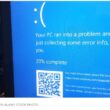Stop living in 1975
 Voice capability is necessary, but it’s almost become the third- or fourth-most important service wireless communications provides. Voice, frankly, isn’t very efficient. What’s more efficient is data, which can offer a multitude of services like GPS and messaging. Messaging is incredibly efficient and supports huge gains in employee productivity. There are applications that can move hundreds of thousands of critical communication messages through a system much more quickly than voice communications ever could accomplish. And many of these need not rely on broadband technologies. Business and industrial entities are migrating to data for these increases in efficiency. Public-safety entities long ago recognized the benefits of migrating to data to support employee and public security.
Voice capability is necessary, but it’s almost become the third- or fourth-most important service wireless communications provides. Voice, frankly, isn’t very efficient. What’s more efficient is data, which can offer a multitude of services like GPS and messaging. Messaging is incredibly efficient and supports huge gains in employee productivity. There are applications that can move hundreds of thousands of critical communication messages through a system much more quickly than voice communications ever could accomplish. And many of these need not rely on broadband technologies. Business and industrial entities are migrating to data for these increases in efficiency. Public-safety entities long ago recognized the benefits of migrating to data to support employee and public security.
EWA views its mission as a frequency advisory committee as facilitating the delivery of the benefits of wireless technology, in compliance with FCC rules, and through the proper allocation and use of spectrum that properly adapts to the technology sought by the end user. That’s why at EWA, we find ourselves scratching our heads a bit when we attempt to understand the self-imposed prohibition on the use of digital data applications that has been instituted by the Public Safety Communications Council (PSCC) within the public-safety 150-170 MHz (VHF) band. This article isn’t intended to address the rightness or wrongness of that decision at all, as EWA did not participate within the PSCC’s deliberations on the matter that resulted in the PSCC position, one that is supported by all four of the FCC-certified public safety frequency advisory committees. From EWA’s perspective, however — and with all due respect to the men and women who work hard to support the public-safety industry through the PSCC — it just doesn’t appear to be a very enlightened position because it fails to recognize the realities of the marketplace. The marketplace is demanding and is shifting more and more every day to features and applications that rely on data. To issue a blanket frequency coordination policy mandating that data solutions (there are a few minor exceptions with respect to system operations) won’t be certified in a very significant band that public safety has relied on for decades, well, as I said, is both curious and bold.
There are rules in place that permit data in VHF, so it is still possible that the FCC will respond to this coordination policy that the PSCC has adopted. From our vantage point, it will only take one licensee to contest this digital data prohibition that the PSCC has constructed, and it would be my expectation that the FCC would more than likely, permit the use of digital data at VHF assuming all other applicable FCC frequency coordination and licensing rules have been accommodated.
That’s not to say that facilitating advanced trunking systems and other advanced digital technologies at VHF is a slam dunk. It’s a difficult band to coordinate, and it was never intended for this level of sophisticated technology. It was a band created long ago for simplex analog operations, and never in anyone’s wildest imagination was it considered to be a critical spectrum platform for advanced digital trunked systems in public safety or even in business and industrial VHF allocations. The easy solution is to construct a Chinese Wall to forestall the deployment of digital data solutions that customers seek to invest in to enhance their public safety operations. The truth is that you just have to work a little harder at VHF. It can be difficult and sometimes impossible to find spectrum for these advanced technologies, but frequency advisory committees should have no choice but to attempt to accommodate their customers’ technology requirements. That’s why organizations that are representative of the industry were certified by the FCC in the first place – they should at least make the effort to identify VHF spectrum that will serve the applicant and incumbents.
It is understood that many VHF licensee incumbents continue to be satisfied with their analog systems and will be for the foreseeable future. Analog is a proven and effective voice technology. However, more and more digital based systems are entering the marketplace and eventually, analog will be the minority and digital will be the majority of systems. This transition is creating a difficult learning curve for some. In the immediate past, analog system licensees sharing channels heard one another’s conversations at times, and in fact could talk to one another. Is this harmful interference assuming licensees were following necessary monitoring protocols in accordance with the FCC rules? No. In a shared analog-digital environment which is becoming more the norm, licensees do not hear conversations, they hear unintelligible noises. Is this harmful interference assuming licensees are following necessary monitoring protocols in accordance with the FCC rules? No. Is it a significant nuisance? Yes. Can you impede this phenomenon through bans on certain types of system applications? Perhaps for a while, but not forever. Consumers will eventually find a way around the arbitrary obstacle.
Digital is here and its use will continue to grow in all land mobile bands. Digital systems provide an ever increasing array of features that support public-safety, business and industrial operations. We might as well embrace the technology and help our customers achieve their wireless ambitions. No sense living in 1975!
Mark Crosby is the President/CEO of the Enterprise Wireless Alliance (EWA).


















